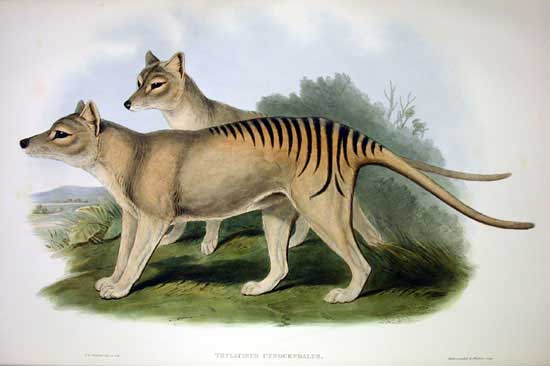Podcast: Play in new window
The last known thylacine died in captivity in the Hobart Zoo, Tasmania, in 1936.
BOB HIRSHON (host):
Mapping extinct brains. I’m Bob Hirshon and this is Science Update.
Tasmanian tigers were more closely related to kangaroos than to large cats, but they resembled coyotes. Little was known about the carnivorous marsupials when they went extinct in 1936. Now, in a scientific first, researchers have scanned preserved brains of the extinct mammals, also known as thylacines. Emory University neuroscientist Gregory Berns and his colleagues report in PLOS One that the meat-eating animals devoted more of their brains to planning and decision-making than their closest living relatives, Tasmanian devils, which scavenge for food.
GREGORY BERNS (Emory University):
The thylacine brain had more connections to the frontal lobe, which supports the idea that they were probably smarter animals than they were ever given credit for, likely because they were hunters.
HIRSHON:
Learn how scientists are mapping the brains of other predators at brainark.org. I’m Bob Hirshon, for AAAS, the science society.
Story by Susanne Bard

